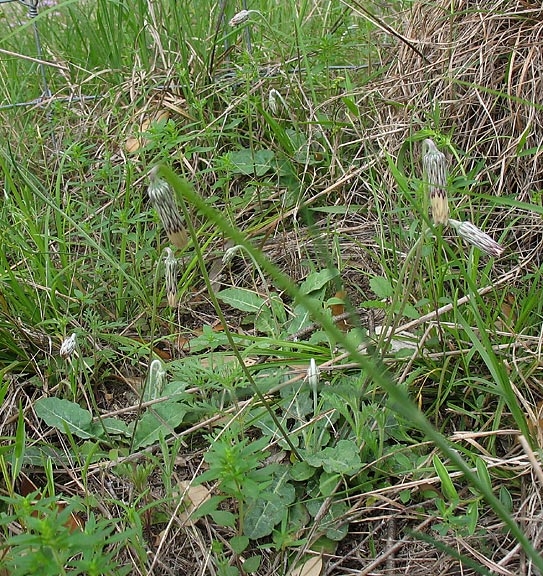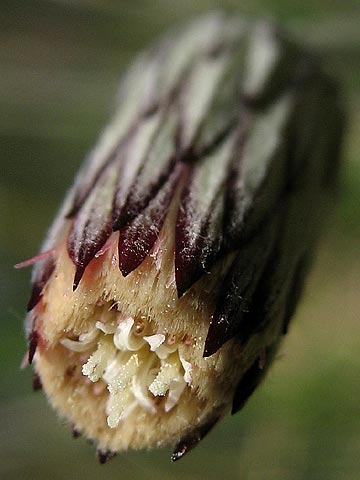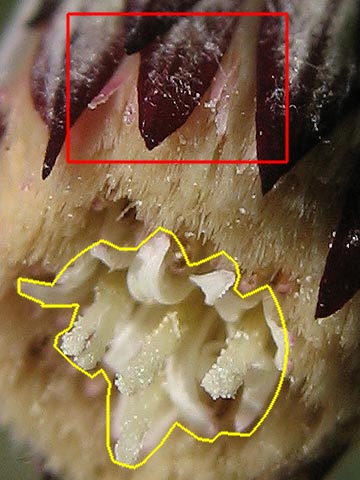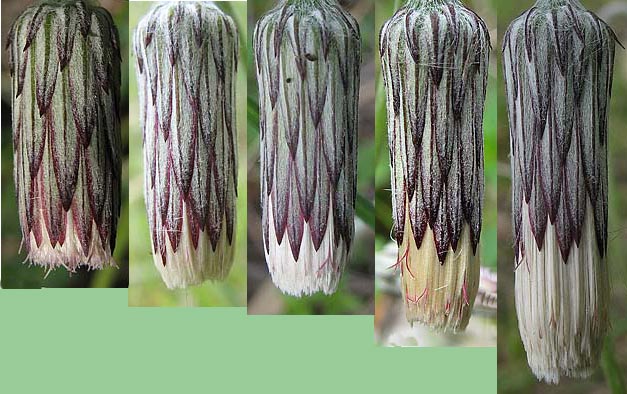


In a small valley on Purola Preserve with a creek that enters Deadman's Creek all plants examined were of a distinct C. carduacea type, easily recognized by the lack of apparent ligulate flowers in early spring phase. But inspection of individual peripheral florets revealed reduced ligules (as shown below). In early spring 2011 a plant transplanted into a pot and watered consistently also produced only reduced ligulate florets typical of the wild plant population, ruling out environmental impact as an explanation of this type. In older treatments it would probably be treated as a forma (e.g., C. carduacea forma subligulata), especially since it is necessary to constantly refer to my observations of this type as special cases. (A mid–April head with even more greatly reduced ligules.)





Counts of all florets from C. carduacea heads with reduced ligules at different locaations showed:
| count 1 | count 2 | count 3 | averages for 3 counts of heads with reduced ligules |
|
|---|---|---|---|---|
| reduced ligulate, pistillate | 16 | 15 | 22 | 18 |
| eligulate, pistillate | 40 | 40 | 38 | 39 |
| central perfect | 12 | 12 | 13 | 12 |
| total: | 68 | 67 | 73 | 69 |
The mouth of the tightly closed involucre at anthesis is shown below. The style branches visible only at the very periphery, against the phyllaries, [red box] are from the hightly reduced ligulate florets. The perfect central florets, with style branches exerted, are within the yellow area. The styles of the eligulate pistillate florets in between are largely concealed by the pappus, although a few pink tips are visible.


As a head develops the achene beaks elongate, pushing the florets and pappus out from the involucre. The follwing image illustrates 5 stages in this process. [Click on a head to view enlargement of that head.]
